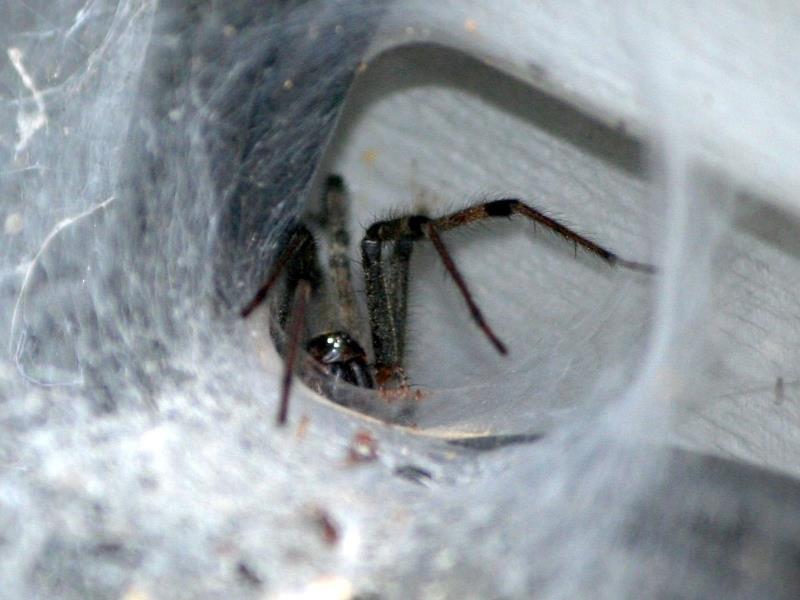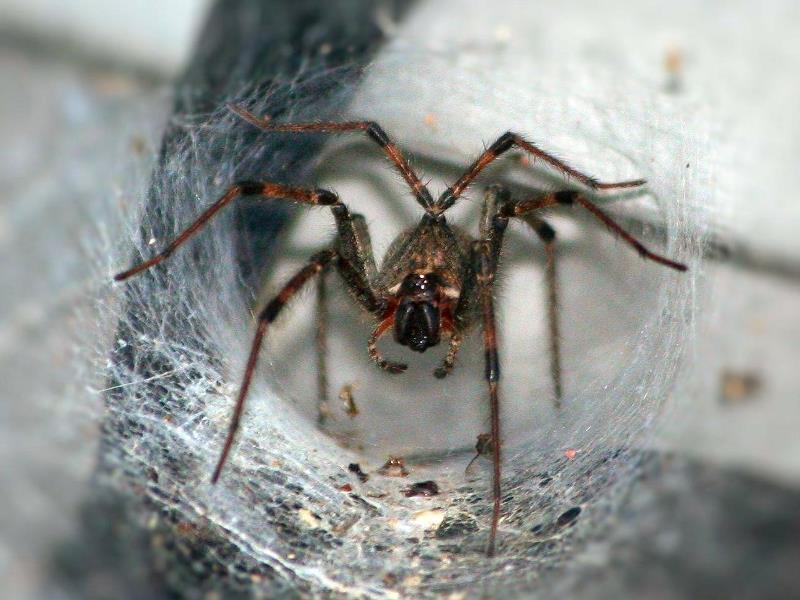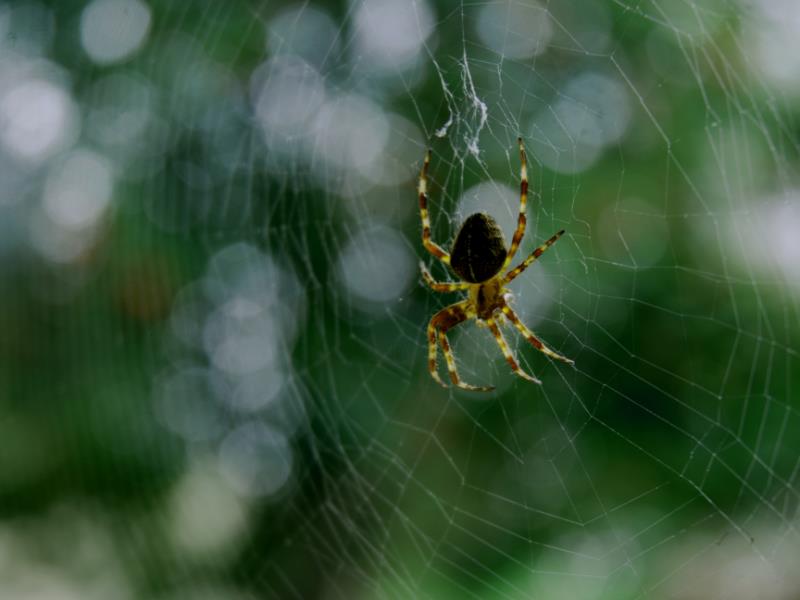The funnel-web spiders are a family of spiders known as atracids. There are three genera present within the family Atrracidae: Atrax, Hadronyche, and Illawarra, and combined, the three genera represent thirty-five individual species. The funnel-web spiders are native to Australia, and presently, they are not found anywhere else in the world.
What Do They look Like?
Funnel-web spiders range from medium to large in size relative to the average size of a spider, coming in between one and five centimetres in total length. Notably, one specimen was discovered measuring an incredible eight centimetres in length, prompting discussion around the conditions that caused the abnormal growth.
The carapace on the front half of the funnel-web spider is hairless, and some species have a large spinneret adorning the back half of their bodies. Much like other spiders in the infraorder Mygalomorphae, such as the tarantulas, the fangs of a funnel-web spider point straight down instead of at each other. The funnel-web spider has ample venom glands behind the fangs, and their venom is a noteworthy aspect of this creature.
##When Are They A Threat?
Most funnel-web spiders spend their entire lives hidden in the safety of their nests. Once the male reaches maturity, though, it is forced to wander out into the safety of the world in search of a female to mate with. While the diet of a funnel-web spider consists mainly of insects, their predators can be quite large, which means the male funnel-web spider will reflexively bite any creature it views as a threat on its journey, including humans.

Funnel web spiders are notable for the funnel shape they make with their webs
How Do They Form New Nests?
The majority of funnel-web spiders choose to create nests on or in the ground. These burrows are guarded by silk ’trip-lines’ that span out from the entrance of the burrow, which can be used to identify a funnel-web nest. The entrance has a distinct, well-defined funnel-like ‘vestibule’ that feeds into a collapsed tunnel-like structure that has either one or two openings in the shape of a slit. Behind that tunnel is a small chamber, which then descends into the deeper burrow itself. The burrow of a funnel-web spider typically isn’t more than 30cm deep, and the walls will be weakly lined with silk. Funnel-web spiders typically choose to build their burrows in shaded areas that hold moisture, such as dense shrubs, leaf litter, and logs. Their nests are commonly confused for the nests of other creatures, though, as the entrance can appear similar to that of a brown trapdoor spider, a mouse spider, or some species of insects.
Some funnel-web spiders will choose to build their nests up in trees, some resting as much as 30m above ground. These spiders sometimes build their nests in rotting holes that open out onto branches, though others will live inside the entirety of a dead tree.
Funnel-web spiders ‘hunt’ by sitting just inside the entrance of their nest. When a bug, insect, or other creature steps onto the trap-lines radiating from the burrow, the spider is alerted to their presence and springs out, immediately biting whatever set it off and injecting a significant amount of venom into its target. If no prey has wandered near the nest for some time, then the funnel-web spider may also choose to forage near their burrow.

They lurk within the entrance of their nest while hunting, and leap out when prey passes nearby
What Risk Do They Pose?
Funnel-web venom is a serious health risk to anyone who has been injected with it, and it has caused numerous deaths in the Australian population. While it is estimated that only ten-to-twenty-five percent of bites from a funnel-web spider will actually see the victim injected with enough venom to threaten their life before the spider is brushed off, it is impossible to determine whether this has happened until it is far too late, and it is best to assume that every bite from a funnel-web spider is deadly. This is taken to an extreme in areas where the spider is known to live, and any bite inflicted by large black spiders is considered to be life-threatening until proven otherwise.
In total, there have been thirteen deaths due to funnel-web spiders documented, and seven of those deaths were children. Fortunately, the development of effective anti-venoms for funnel-web spiders has seen the death rate drop to zero, and it has been decades since the last funnel-web spider related death.
Is There Anywhere In Particular They’re A Bigger Threat?
The funnel-web spider is distributed widely throughout Australia. They are extremely common along the eastern coast, particularly in Queensland and New South Wales, and they do not appear at all in Western Australia or the Northern Territory.
Wandering male spiders can appear in all sorts of places on a property, so it is best to apply caution at all times if you live in a region that the spider is known to occupy. In particular, they are drawn to water and can sometimes fall into pools, surviving submersion for hours at a time. Unfortunately, they will then bite anyone who wanders too close to the pool, or whoever attempts to pull them out.











